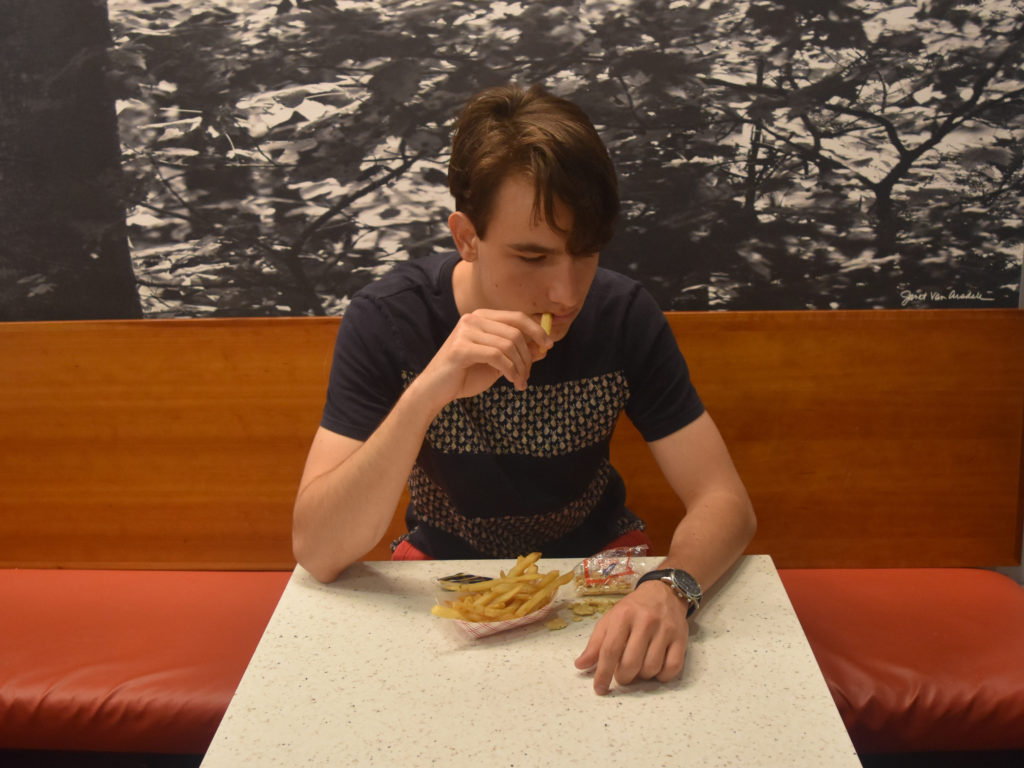
Tallack quickly realized that eating alone in your third year of college feels exactly the same as eating alone in your first year.
Photo by: Jessica Ma
After two years of promising his on-campus friends that he would “never touch that overpriced dining hall food again after moving off campus,” third year Doug Tallack was seen eating dinner at Pines for the third night in a week.
“Look, I know what I said, and I still maintain that on-campus food is too expensive,” explained Tallack. “But now that I have to actually make my own food, I just feel like I’m missing out on only having to use the microwave to cook my meals – the real college experience. Plus, have you heard of the community dining plan? I can’t pass up an opportunity like that.
“I actively used to complain about Pines, if you could imagine. I mean c’mon, $7 for a tiny bowl of stir fry – that’s ridiculous! But the thought of having to make my own food … like what even goes in a stir fry? Fries, probably, but who knows? It’s just not worth it.”
When confronted by a friend who stated that he knew Tallack was driving to campus every night to eat in the dining halls, Tallack responded that he “basically lived in the area,” and “would’ve probably come to campus to study anyways.”
“I’ve done a lot of thinking about this one, actually. I figure, it only takes me about 20 minutes to get to campus, 30 if you count parking,” continued Tallack, counting on his fingers. “That’s so much less time than going to the grocery store and cooking my own meals. And I get 20 percent off – I’m practically stealing from HDH! I mean, think about how much you spent on dining dollars, Jack; there’s no way I’m spending $3000 at Pines this year.
“Not to mention the price of ingredients. Why would I pay $1.29 for uncooked eggs when I could buy scrambled eggs every day for $1.25? It’s basically the same price – and when you factor in the time and labor cost of cooking the eggs, I think I’m probably making the better choice. Plus, do you know how many ways there are to cook eggs? It’s overwhelming.”
Tallack was also questioned by another friend about his purchase of food during the day, citing his half-eaten sandwich from the Pines deli as an example. Tallack was then heard explaining that the sandwich was “essentially two meals if you saved some for later,” and made it “practically free if you factor in that sweet 20 percent discount.”
“You know, I went into the year with the plan of only buying food on campus like once, maybe twice a week. But could you imagine how much food I’d have to make and bring to school everyday?” Tallack said, gesturing as if to suggest a lot of food. “And then what am I supposed to do with some cold food I made the night before? You can’t microwave tupperware – everyone knows that. We can’t all live in Tamarack, Mark.”
Tallack was later seen walking into John’s Market, explaining to his friends that “20 percent is actually a really good deal in the long run,” while also asking if they’d “spot him this one time” or “sell him some dining
dollars 2:1.”
Hannah Lykins is a fourth-year student at UCSD.











